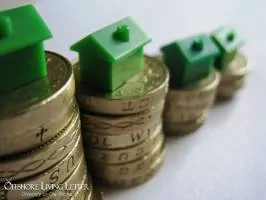
The Keys To Building A Real Estate Portfolio Using Leverage
How Lief Simon Built A Multimillion-Dollar Property Portfolio Starting With A Borrowed US$5,000
Leverage is the Holy Grail for just-getting-started real estate investors in the United States. A mega-industry has developed around no-money-down gurus and their systems.
I bought the program of one of the best known of these guys, Carlton Sheets, more than 20 years ago when I was getting started at this myself.
Indeed, I followed Sheets’ advice when making my first property investment.
I was living in Chicago at the time and identified a Chicago neighborhood that I believed was poised for big and quick growth.
In this neighborhood I found a three-flat building for sale. My plan was to buy the building and live in one of the three flats while renting out the other two.
I was 27 years old at the time and didn’t have the US$210,000 sales price in cash. I needed leverage.
In fact, I didn’t even have 20% for the down payment. I had US$5,000 that I had borrowed from a family member. Following Sheets’ lead, I shopped banks until I found one that would lend me the rest of what I needed.
Fortunately, the rents covered the mortgage and property values increased quickly and significantly… as I had gambled they would.
I sold the building two-and-a-half years after I’d bought it for US$350,000.
It was the capital I netted from that sale that I used to make my first property purchase overseas.
This story is an example of how leverage can work in your favor.
Of Course, It Can Also Work Against You...
Years ago I met a guy who had built a Carlton Sheets-style portfolio of highly leveraged real estate rentals in the city where he was living. He was enjoying positive cash flow—that is, the rents covered the mortgage payments—and he was happy… content with what he’d accomplished.
Until hard times hit his city. A downturn in his local economy forced him to reduce rents and caused him to lose some tenants altogether.
In the end, his leveraged property pyramid collapsed. He lost every one of his rental properties.
Despite the risks, we Americans in particular like to leverage our real estate investments even if we don’t need to. The trouble is, this just isn’t possible in much of the rest of the world.
In places where mortgage financing is available, it’s not easy to get. Qualifying can be more challenging than in the States. In Panama and the Dominican Republic, for example, it’s possible for a foreigner to obtain a mortgage. However, if you manage to qualify for financing, you’ll get no more than 70% loan to value or, more likely, no more than 50%, and your interest rate will be higher than for a U.S. mortgage and variable rather than fixed.
This is not to say that you must have 100% of the purchase price in hand for any and every property purchase you make overseas. You can’t count on traditional bank financing in most of the world, but you have other options.
Buying pre-construction, for example, amounts to interest-free financing. You aren’t borrowing to buy, but you don’t have to put up all the money required for the deal at once. Typically, you make a down payment (maybe 20% to 40%, say) and then staged payments tied to construction benchmarks.
Buying pre-construction can mean a discounted price (because you’re taking a risk by investing in something that doesn’t yet exist) and, as well, that you can have up to two years or longer to come up with the capital required for the deal.
Developer financing is another option. It’s increasingly common for developers in emerging markets to offer purchase terms. One such current opportunity I like is in Brazil, where developers we know are offering financing for the purchase of beachfront lots.
Finally, individual sellers can be open to carrying back part of a purchase price. We were able to do this with the building we purchased in Panama City last year for our Live and Invest Overseas offices, for example.
When asking a private seller to “finance” your purchase, the terms are whatever he’s comfortable with. However, typically, private sellers look for at least 20% to 50% down and want to be made whole within a relatively short period of time, say three to seven years.
Lief Simon



